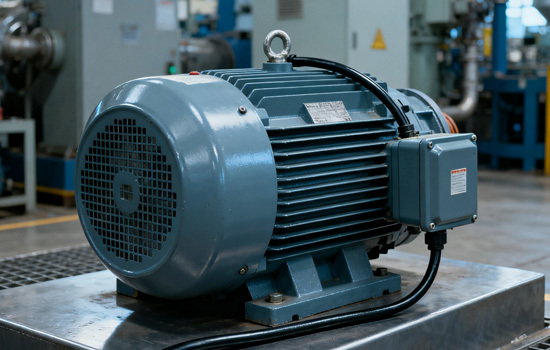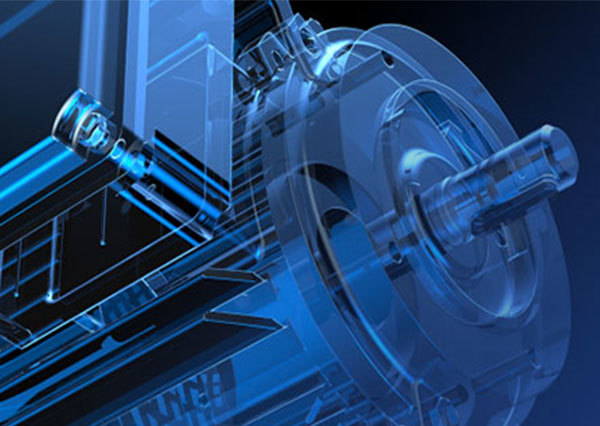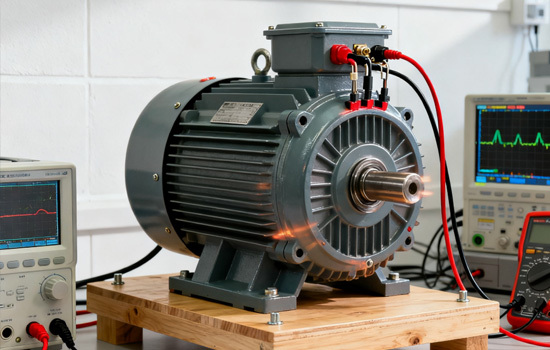WELCOME TO FANGDA ELECTRIC MACHINE CO..LTD
Interpretation of the New National Standards for Three-phase Asynchronous Motor Series in 2025
Oct 03,2025

I. Core Changes of the New National Standard
Standard update and implementation time
GB 30254-2024 was released on August 23, 2024 and officially implemented on September 1, 2025, replacing the 2013 version of the standard.
It mainly covers high-voltage three-phase squirrel-cage asynchronous motors, suitable for continuous duty motors with 50Hz three-phase AC power supply, voltage levels ranging from 3kV to 10kV, and rated power from 200kW to 25000kW.
Adjustment of energy efficiency grades
The new standard further tightens the energy efficiency limit values, raising the minimum energy efficiency requirements to the international advanced level and promoting the development of high-voltage motors towards IE4 and above energy efficiency grades.
New energy efficiency index requirements for high-power motors (such as 200kW to 2000kW) have been added, and the applicable range of cooling methods and voltage levels has been expanded.
Optimization of test methods and technical requirements
The testing methods for asynchronous start and variable frequency speed regulation motors have been revised to ensure more accurate energy efficiency data.
Add coolers (or fans) as key components and strengthen the supervision of the overall energy efficiency of the motor system.
Ii. Policy Background and Significance
Driven by energy conservation and emission reduction targets
According to the "Action Plan for Improving Industrial Energy Efficiency", by 2025, the energy consumption per unit of industrial enterprises above designated size should be reduced by 13.5% compared with that in 2020, and the proportion of newly added high-efficiency and energy-saving motors should exceed 70%.
Motor systems account for over 60% of the total electricity consumption in industry. Improving energy efficiency is crucial for achieving the "dual carbon" goals.
Benchmarking against international standards
Chinese energy efficiency standards (such as GB 18613-2020) are in line with international IEC standards. For instance, IE5 is classified as the highest energy efficiency grade (national standard level one), and IE3 is the minimum entry value.
The new national standard further Narrows the gap with the energy efficiency requirements of Europe and the United States, promoting domestic motors to participate in international competition.
Technological upgrade path
Permanent magnet and reluctance motors: Utilizing rare earth permanent magnets or synchronous reluctance technology, energy efficiency is enhanced to IE4/IE5, and system losses are reduced.
Variable frequency drive optimization: When paired with a dedicated frequency converter, the comprehensive energy-saving rate can reach 5% to 35%.
Customized design: Optimize the matching of motors and loads for scenarios such as ships and air compressors to reduce transmission chain losses
Eliminate backward production capacity
IE2 and below energy efficiency motors have gradually been phased out of the market, and the new standards are accelerating the elimination of high-energy-consuming motors.
In 2023, the penetration rate of high-efficiency and energy-saving motors in China was less than 10%, and it needs to increase by an average of 10 percentage points annually over the next two years
Summary
The release of GB 30254-2024 marks a new stage in China's motor energy efficiency supervision. By raising the energy efficiency threshold, expanding the scope of application, and optimizing the testing methods, it promotes the industry's transformation towards green and low-carbon
Contact
E-mail :
Tel/ WhatsApp:
Address:
Daxi Industrial District, Daxi Town, Wenling City, Zhejiang, China





